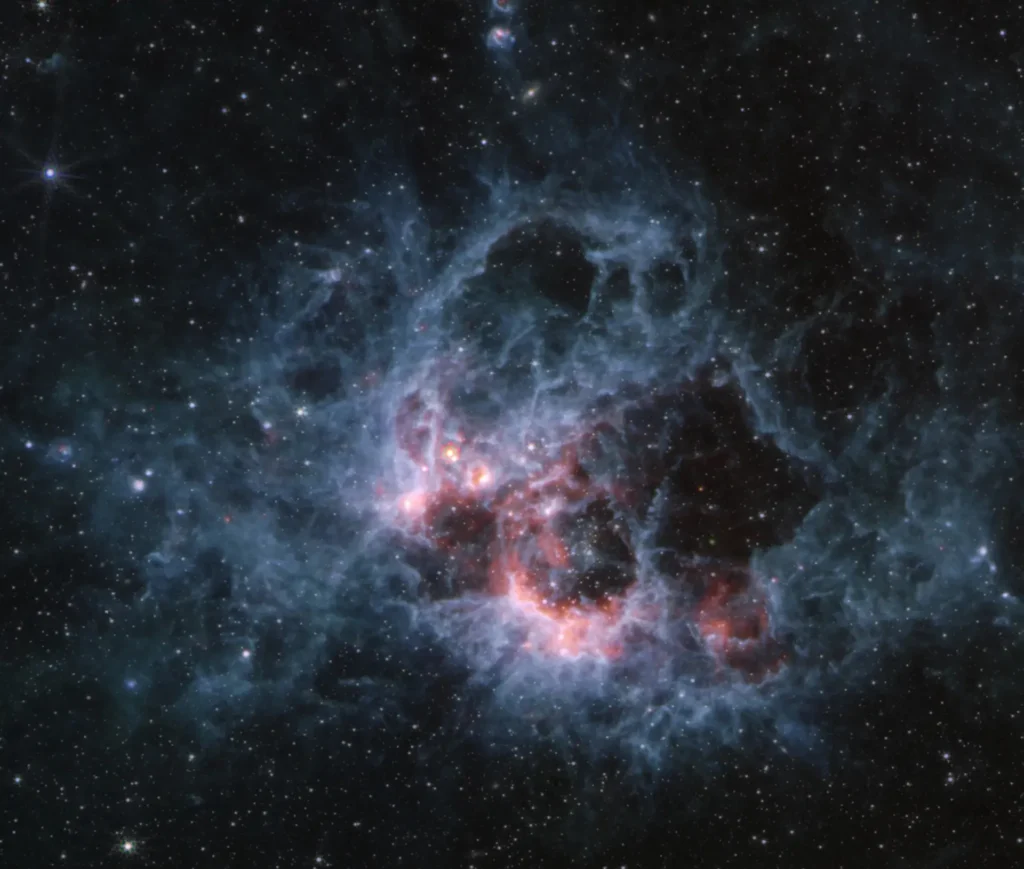In the vast expanse of the Triangulum galaxy, NASA’s James Webb Space Telescope has captured breathtaking images of the NGC 604 stellar nursery, a region teeming with nearly 200 stars in various stages of formation. Located 1,300 light-years away, NGC 604 shines as one of the most massive star-forming regions known, offering a mesmerizing glimpse into the dynamic nature of our universe. James Webb’s Mid-Infrared Instrument (MIRI) and Near-infrared camera (NIRCam) have unveiled never-before-seen details of NGC 604, showcasing cosmic bubbles, tendrils, and young stars in exquisite detail.
A Closer Look at NGC 604

At the heart of NGC 604 lies a dazzling display of bright blue patches, each representing a hotbed of stellar activity. These patches, illuminated by the energetic radiation emitted by young stars, serve as a testament to the intense processes unfolding within the stellar nursery. Spanning over 1500 light-years across, NGC 604 is a vast and sprawling expanse of gas and dust, the raw materials from which stars and planets are born. Within this cosmic crucible, gravity pulls together dense pockets of gas and dust, triggering the formation of new stars.
Unveiling the Mysteries with James Webb

The MIRI image captured by James Webb unveils a tapestry of cosmic bubbles, tendrils, and young stars, each telling a story of stellar birth and evolution. These bubbles, formed by the intense radiation and stellar winds of young, massive stars, are a testament to the dynamic nature of NGC 604. One of the most intriguing aspects of the MIRI image is the presence of polycyclic aromatic hydrocarbons (PAH), organic molecules that play a crucial role in the formation of planets and stars.
The Significance of Organic Molecules
The presence of PAH in NGC 604 suggests that the conditions for star and planet formation are not only present but also conducive to the development of complex organic molecules. These molecules, formed through the interaction of radiation and molecular clouds, are a key ingredient in the recipe for life, and their presence in stellar nurseries like NGC 604 raises intriguing questions about the origins of life in the universe. Moreover, the discovery of PAH in NGC 604 has broader implications for our understanding of the cosmos.
Insights and Implications
The images captured by James Webb’s MIRI and NIRCam offer valuable insights into the processes that govern star formation and evolution. By studying these images, astronomers can gain a deeper understanding of the origins of stars and planets, as well as the complex interplay of forces that shape our universe. The discovery of organic molecules like PAH in NGC 604 opens up new avenues for research into the origins of life in the universe, offering tantalizing clues about our cosmic origins.
Conclusion:
As we continue to unravel the mysteries of NGC 604 and other stellar nurseries, we inch closer to understanding the fundamental questions about the origins and nature of the universe. The images captured by James Webb’s MIRI and NIRCam are not just stunning visual representations of a distant stellar nursery; they are windows into the complex and dynamic processes that govern star formation and evolution, deepening our understanding of the cosmos and our place within it.



















